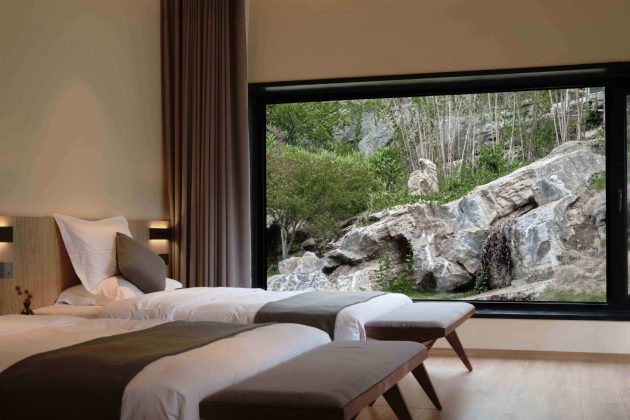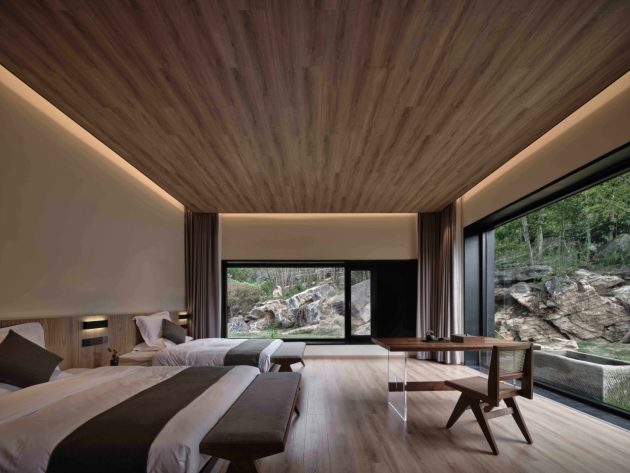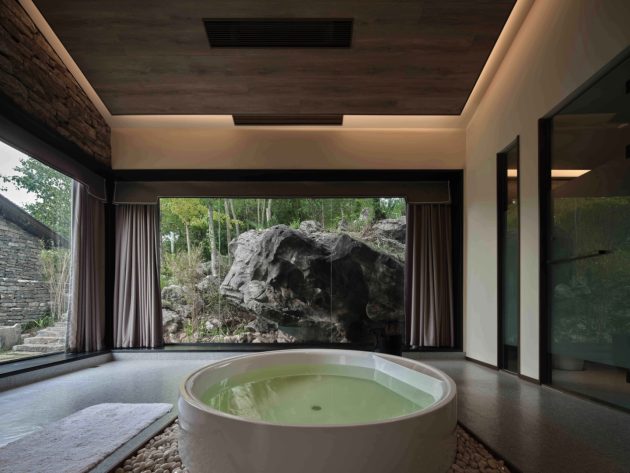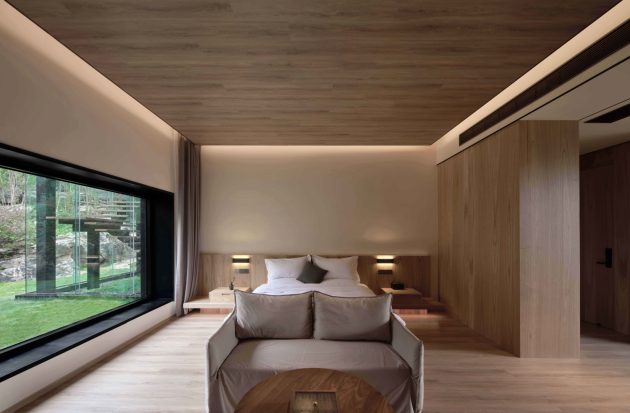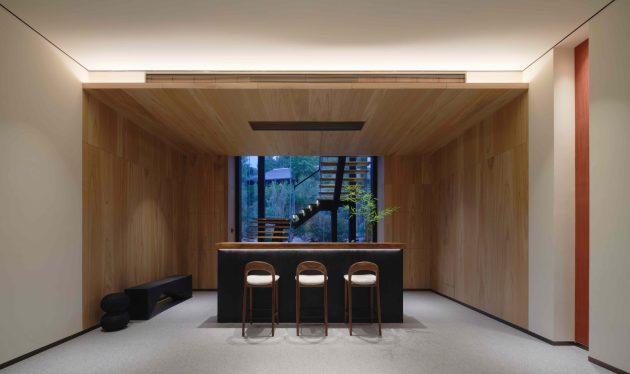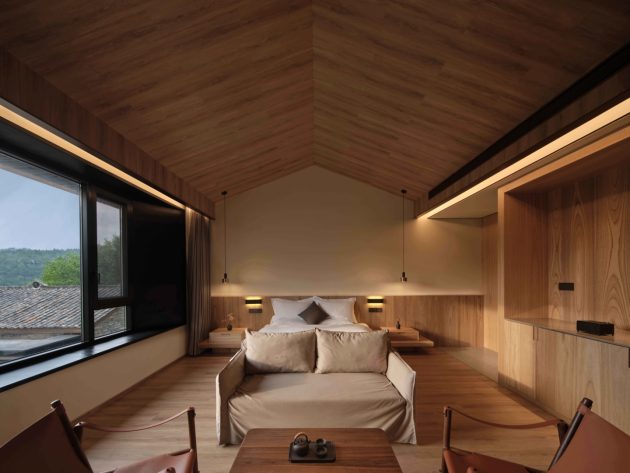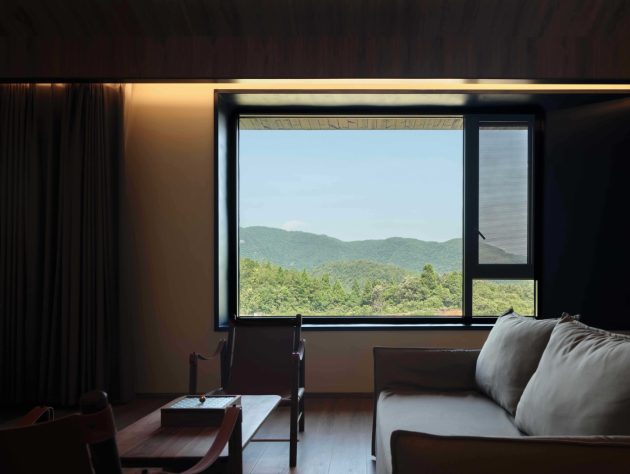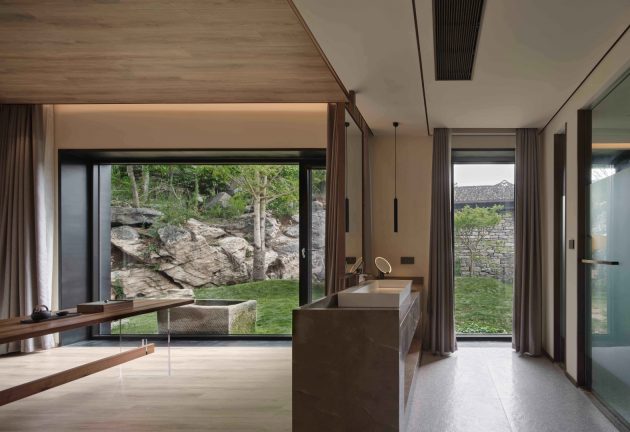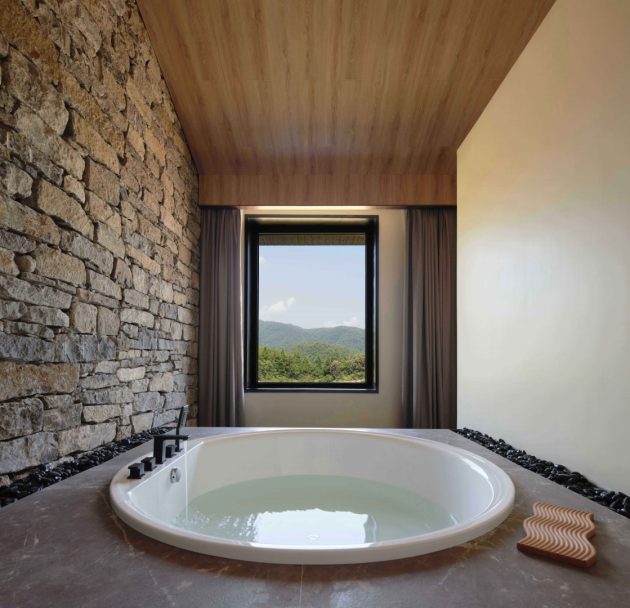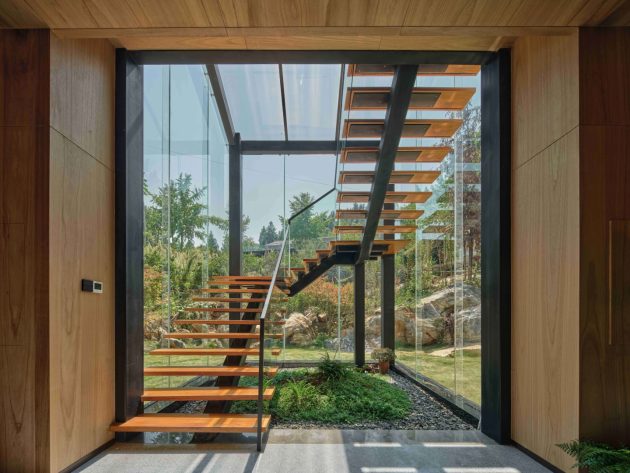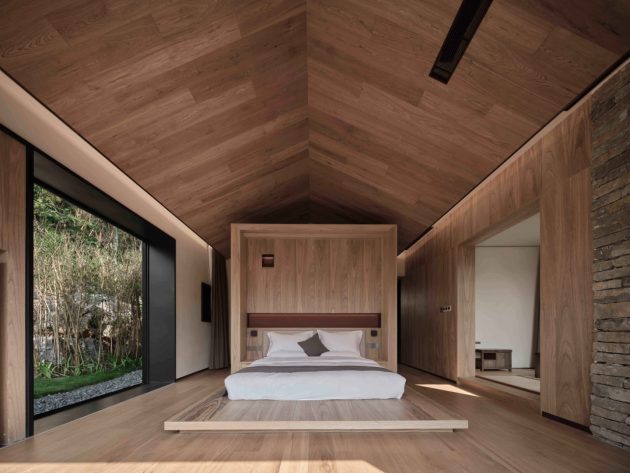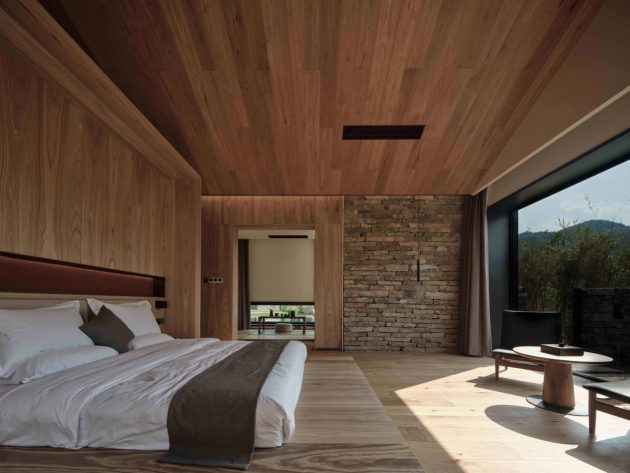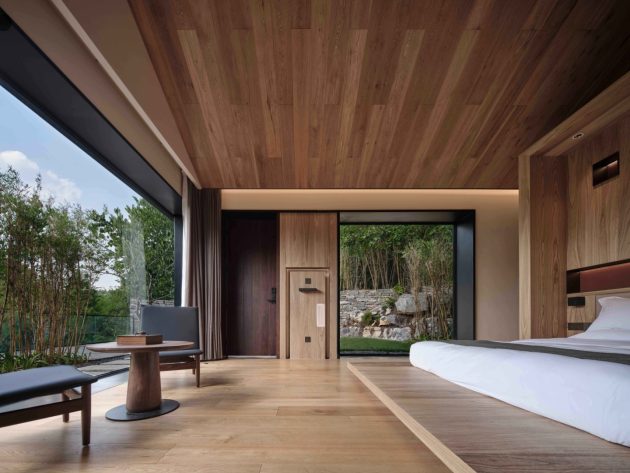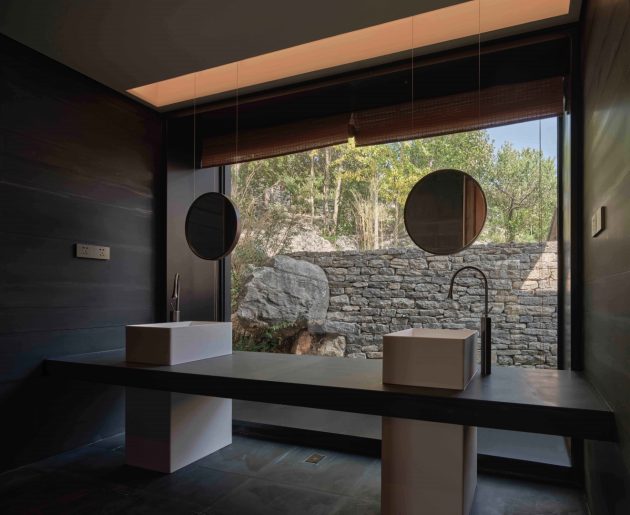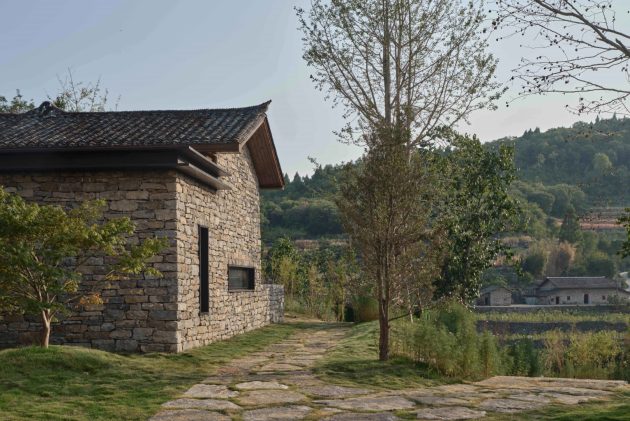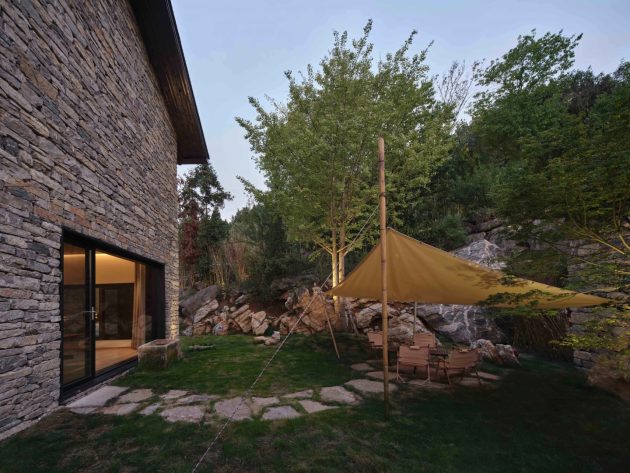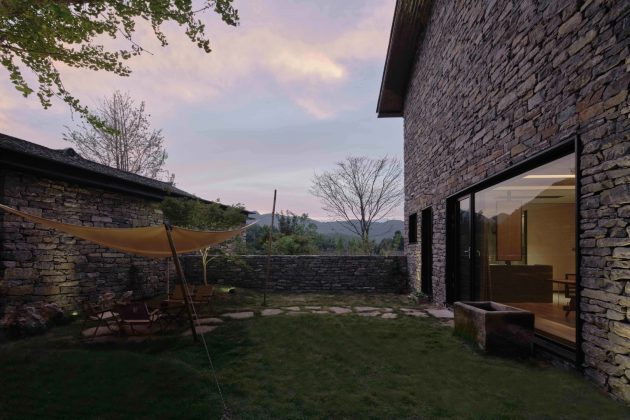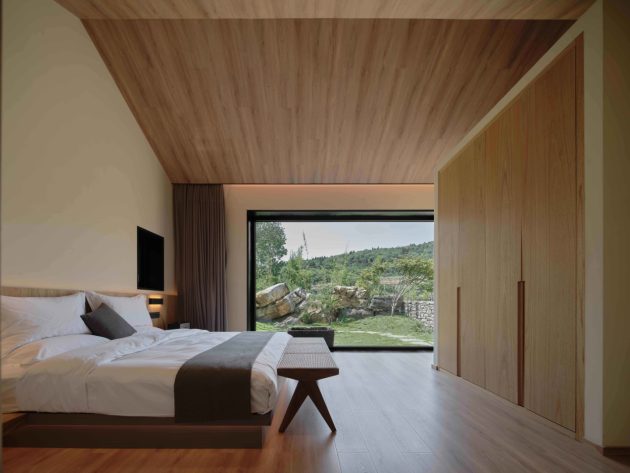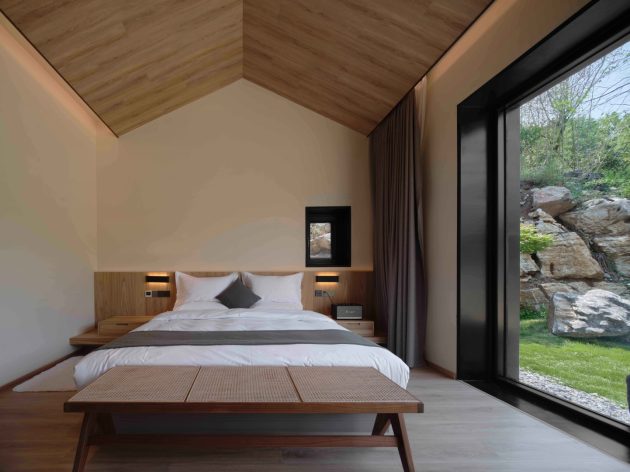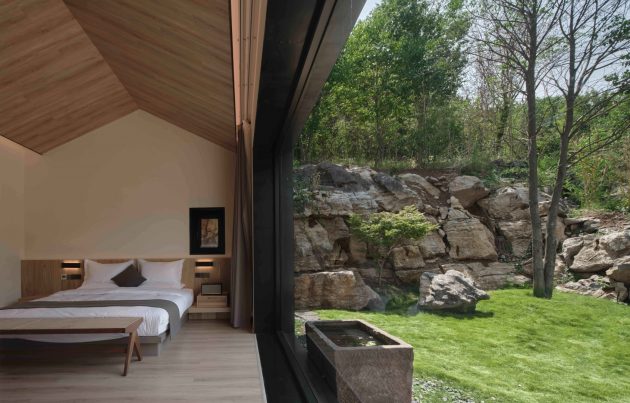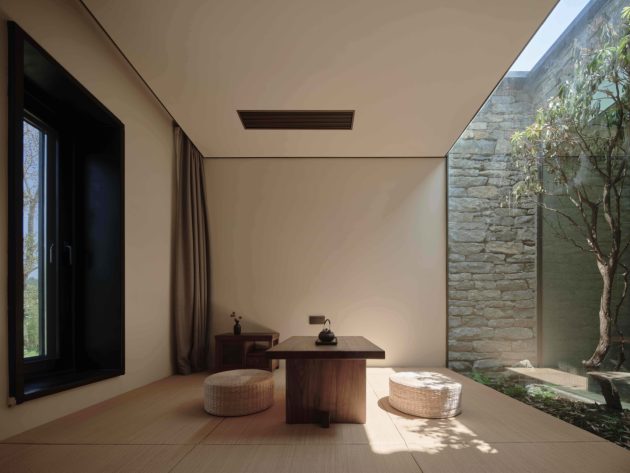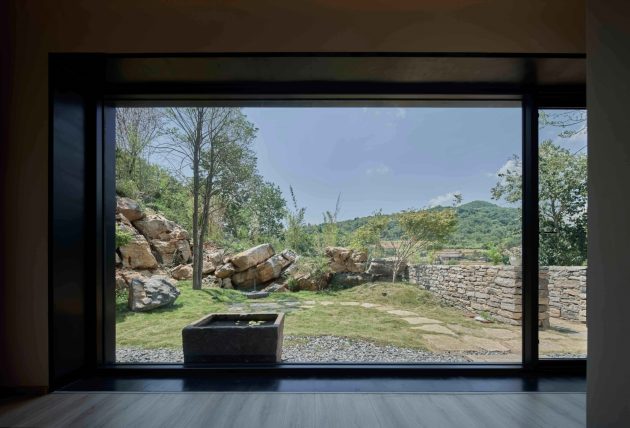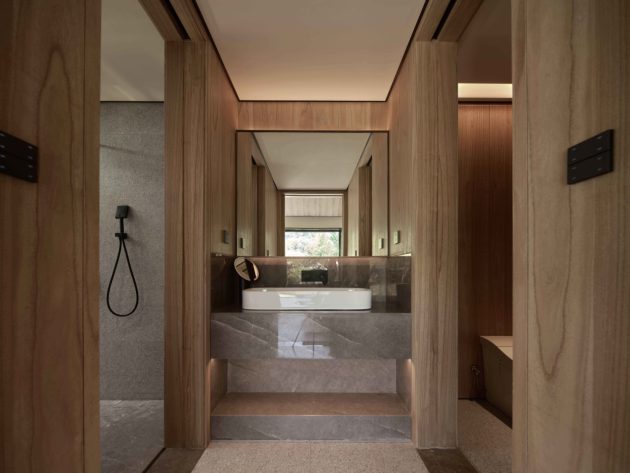Project: Nanchawan Stone Houses
Architects: The Design Institute of Landscape & Architecture, China (CAALDI)
Location: Nanchawan, Yiling Township, Yichang City, Hubei Province, China
Year: 2021
Area: 7,534 sf
Photographs by: AOGVISION
Nanchawan Stone Houses by CAALDI
Recently, we have noticed that the relationship between urban and rural living has started to undergo a transformation: rather than being one of opposites, it has gradually become something closer to mutual enrichment. However, the fact remains that the countryside lacks the amenities and convenience of the city, and the city is largely separated from nature due to distance and lifestyle. This marked contrast lends life in the countryside a heightened standing for those who live in the city.
Today, architects in China are tasked with finding feasible solutions for the problems posed by building projects in the countryside: how can rural culture be appropriately revitalized? How can rural renewal go beyond fallback commercial models, yet retain the unique texture of the countryside?
With the development of new resort hotels, B&Bs, and other accommodation options, as well as easier access to media exposure online, opportunities for urban dwellers to experience previously unknown parts of the countryside has become much more straightforward. Rural areas are no longer accessible to a privileged few, but are now open to a large number of curious visitors.
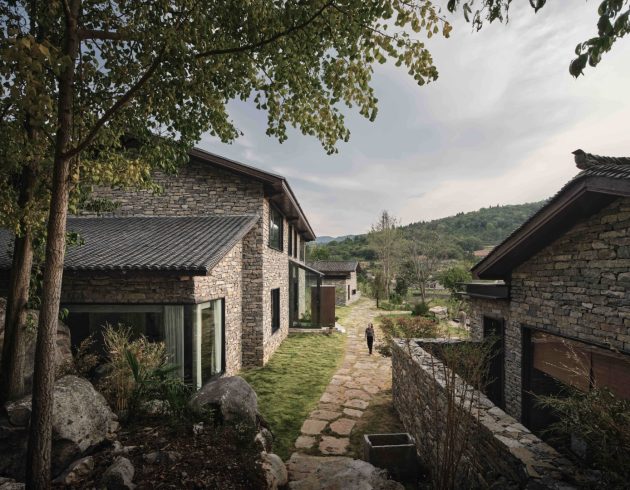
Rural Texture: Unobtrusive design in the countryside
During the design process for the Nanchawan Stone Houses project, the architects began with the clear concept that the “countryside takes precedence over design”.
The Nanchawan Stone Houses project is located in a small mountain village in Hubei Province, adjacent to the famous Three Gorges area along the Yangtze River. The local landscape is dotted with small mountain villages, offering an abundance of cultural and natural beauty. The first phase of the Nanchawan Stone Houses project was completed in 2020, during which time the architects had already planned the second phase.
In establishing the masterplan for this village of stone houses, the designer made a conscious decision to avoid an approach reminiscent of a commercial hotel – rather, a design strategy which aimed to develop the local architectural vernacular in a new direction, while maintaining the existing character of the region was adopted.
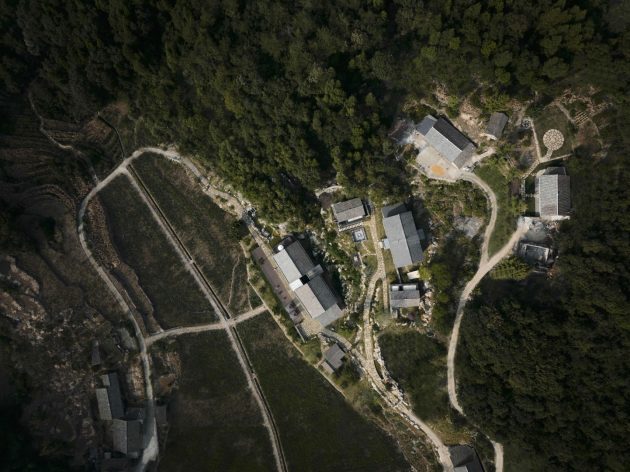
The way ancient villages slowly grew over time cannot be replicated by a contemporary design process: they developed naturally, in response to necessity dictated by their immediate surroundings. An ancient tree, an old village road, or a location in close proximity to another home could all be factors in determining the form of an ancient house.
After an initial site visit to Nanchawan village, two buildings in Phase 1 were developed. Originally, the buildings belonged to two brothers: like the buildings belonging to the other villagers, they were built from locally sourced mountain stone. Unfortunately, the original buildings suffered from constant drafts and were prone to leaking when it rained, which were clear problems which needed to be solved in the new design.
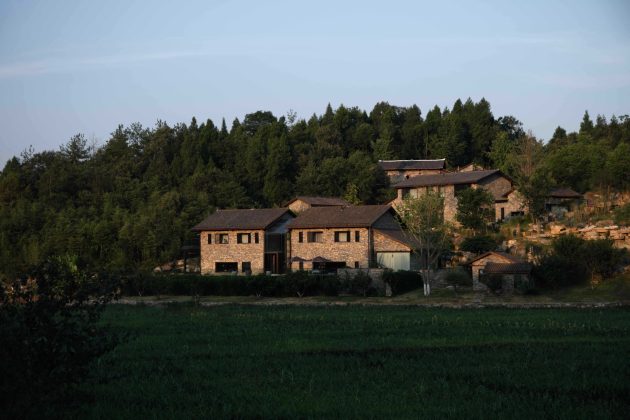
Spatial Textures: A new approach for traditional stone architecture
The architects used traditional Yichang stone architecture as the original reference for the project. The design of the new houses aims to retain the original character of the ancient village, while expressing both the continuity and progression of time. Due to the distinctive regional attributes of the local stone, its presence in the new houses provides a clear connection to rural aesthetics, while providing a quality of timelessness.
The second phase consists of several buildings laid out on the hillside in an irregular pattern, which continues and evolves the architectural relationship with the site that was established with the first phase stone houses. The second phase houses have been sited in response to the environment, in contrast to the first phase: rather than being oriented towards one another, their positions on the hill are determined by the contours of the terrain, similar to the way existing ancient rural houses have been built in the area. With this method, a sense of organic order is achieved while respecting the existing environmental conditions of the site.
Throughout the project, stone has been used in lieu of traditional wood, and is connected to a steel structural system which ensures strong and stable buildings. Traditional sloping roof forms have been implemented with simplified eaves, while a modern window frame system composed of varying opening sizes provides a wide range of views towards the surroundings. In this way the outdoor environment is brought closer to the indoor spaces of the project, allowing impressions of rural life and nature to be seen from within new interiors of modern sensibility.
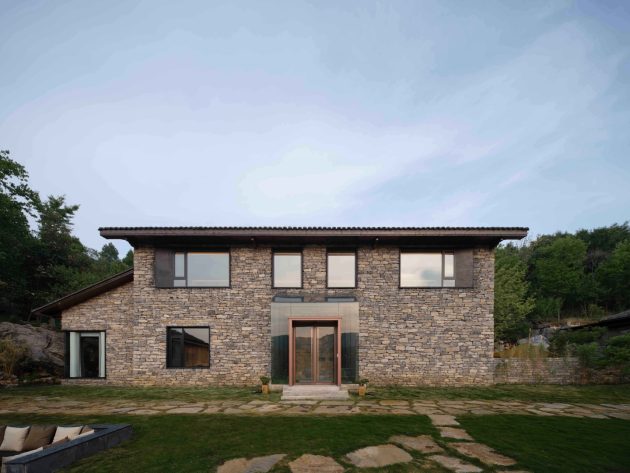
Natural Texture: Continuing the tradition of stone houses through design
The designers have incorporated a strategy which is both respectful and sensitive to the existing area, in order to minimize the impact of the new houses on the environment. As a result, most of the existing natural elements of the site have been retained, the original hierarchical structure of the village architecture has been preserved, and the natural vegetation of the site has been allowed to grow back following construction.
The project also provided occasional surprises during the construction process: in the process of excavating part of the existing mountain soil, an impressive swathe of rock was gradually uncovered. A decision was made to have the larger windows of the buildings face these rocks as much as possible, creating a very powerful visual relationship with the architecture, and the visitors within it.
The texture of mountain stone is also representative of a natural order within disorder: the layout of the buildings and their window openings correspond to its proximity and distance, providing subtle shifts in view and atmosphere, so that each indoor space has a unique frame onto this timeless aspect of the landscape. Mountain stone and wood are also used internally, bringing a pleasing ambience of natural color and texture.
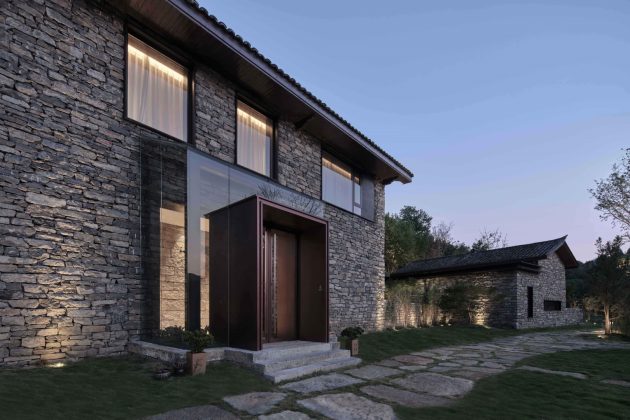
The Texture of Time: Extending the value of design
“Rural construction requires time, especially hand-crafted construction”. The architects understood traditional building techniques could not be done overnight, and ensured that the project was built in close collaboration with local craftsmen.
While stone is used as both a construction material and internal decoration, the interior has been designed to be in accordance with a contemporary lifestyle. Varying proportions of wood, steel, and stone have been implemented to create a large number of different interior combinations. By recruiting local craftsmen with a varied cross-section of skills, the timeless nature of the countryside can be felt and seen in the project’s materials.
The unique texture of countryside experience is also reflected through the restoration of a community: where a group of people may gather together, strolling on uneven roads paved with stones, gazing at distant cottages with smoke rising from chimneys. The hustle and bustle of the city is but a memory here, replaced by direct rural experience, and a simpler way of getting along with one another.
To be sure, the contemporary countryside is not all rosy, and it is certainly not a place for designers to display any elitism. The concept behind the stone houses of Nanchawan Village aims to create an architectural aesthetic paradigm that can be promoted in the countryside by embracing the existing conditions of rural China, and has been developed in the hope that its values may be taken up in other future projects.
-Project description and images provided by Current-Newswire
